#virgin galactic ceo
Explore tagged Tumblr posts
Text
POKEMON EVIL TEAMS RANKED BY HOW LIKELY I WOULD BE TO JOIN THEM
Team Flare
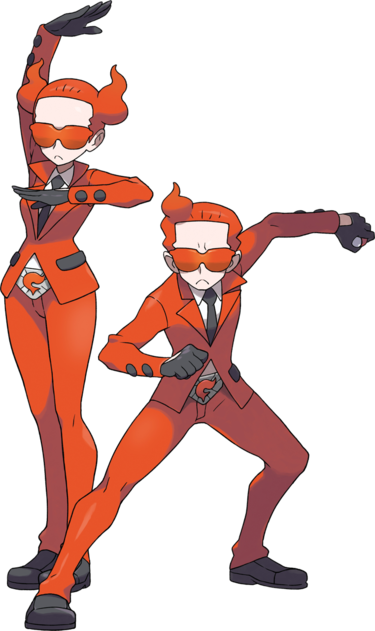
I'm not wearing that suit and I'm not changing my hair. Lysandre is easily the fucking dumbest antagonist and if their plan is successful either they're immortal and I have to live with these losers forever or the whole world dies and I have to live with these losers until I die.
Team Yell
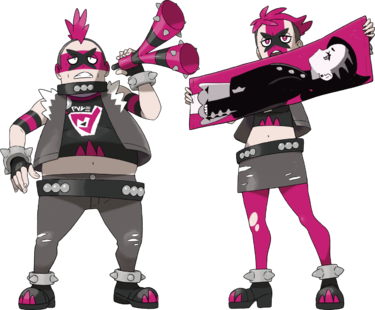
This entire team is centered around having a parasocial relationship with a teenage girl. Also British.
Team Galactic
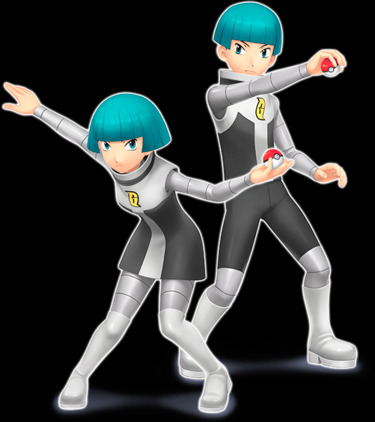
Similar horrible haircut, bad outfit, and death cult scenario to Team Flare. At least they're like a semi-actual company. I could maybe just go bald and get a regular job after the Poke-government liquidates Team Galactic LLC. But I legitimately think this would be the least fun evil company to work at. Imagine stealing some kids Pokemon but you get chewed out by fucking Galactic Admin Uranus because you forgot to fill out the Paperwork.
The Lame Part of Team Plasma
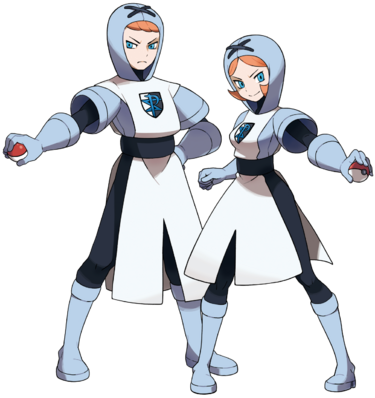
Okay so to clarify these are the people that actually believe in the Team Plasma shit, which means I'd probably be spit on in the streets while wearing chainmail in New York. Why the fuck would I wear Chain Mail on the East Coast? Do you know how much rust there is? Also I have to become a ginger and worship some green manchild as a monarch. At least they're not a death cult.
Team Rocket

This one is just being a criminal. Like, yeah, you get to steal Pokemon but there's no real advantages except the free gray boots. Probably does not pay well and Giovanni leaving kind of sent them spiraling. Plus they have a lot of Koffings in an underground base so you know there's like lung damage galore. The R stands for Respiratory Distress.
Team Aqua

I don't like the idea of being surrounded by the ocean and I do not like boats and submarines. I would actively join this to sabotage their plan. Also every other evil team has an actual place to put their Pokeballs but this one it seems like the plan is to just shove it in my underwear? ???
Team Star

I haven't actually played Scarlet and Violet because I recently learned I can legally drink. I think this one is the equivalent of a school club? So I'm not actually getting paid to do evil shit. I'd probably just join, like, DnD club or something.
Team Rainbow Rocket

I'd join this one just because I know it's going to fail. I mean, it's got like four people who explicitly just want to end the world in different ways. I'm just gonna join and steal pens and shit until it eventually crashes in on itself for infighting. I'd wear my gay-ass R shirt every june in line with a P, I, D, and E.
The Cool Part of Team Plasma
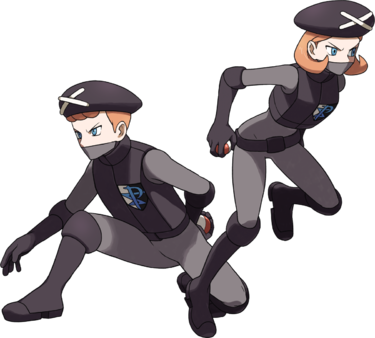
Fuck yeah. This is the Team Plasma that knows the shit Ghetsis is up to. I'd love to be in on the scheme, plus I don't have to wear chainmail. Downside is I'd probably get murdered or have to murder to stay in, and they have the biggest shot of accomplishing their goal. But Ghetsis is hot so that's a plus.
Team Magma

This one is because there's 0.0% chance this plan will work but I get to just hang out in these cute-ass hoodies and pet camerupts all day. Look at that outfit, I'd wear that all the time. That being said, would probably have to be a field guy. Their location is in a volcano. I'm gonna get a call that says 'Hey all of Team Magma's leadership died' and I'd have to get a job at like Poke7-11 with a major gap in my resume.
Macro Cosmos
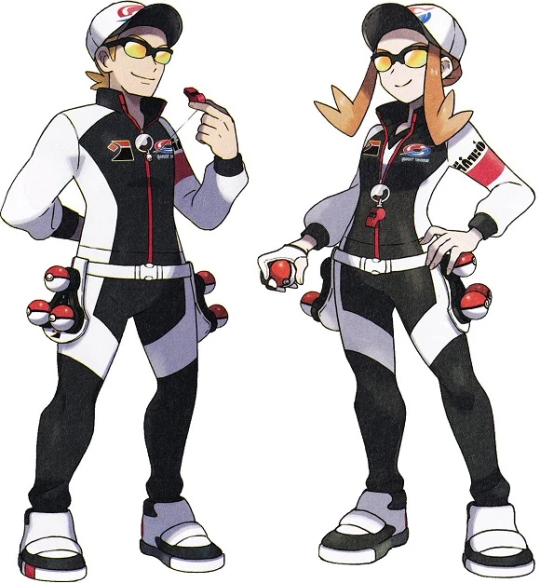
This hardly counts as a villain team because they're just, like, security guards for a company whose CEO goes a lil nuts. This is like if you worked for Virgin Atlantic and Richard Branson decided to summon Satan. No one can really put that on you. You'd probably get paid ridiculous amounts of money for essentially doing nothing. Con is you'd have to live in Galar.
Aether Foundation
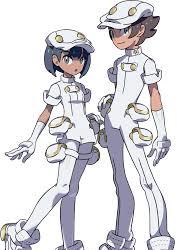
Working for the Aether Foundation is like doing an internship at Bell Labs or whatever. The evil shit is probably fixed by the end of the game and I could just go back to researching Rotom electromagnetic applications and have that 'week where we tried to fuck up reality' be a weird company thing we brush under the rug. The con is they have all white outfits so I can't eat spaghetti at work. But even if I left I could probably just use Aether Foundation as a decent enough jumping off point for any career.
Team Skull

Genuinely this is just goofing off with a bunch of scummy weirdos. I can respect that and their outfits are thankfully not skin-tight jumpsuits, but main I'd join because they all kind of suck. With the most moderate competency I could run Team Skull. Also Guzma. He's pretty hot.
#text post#pokemon#team rocket#team skull#team galactic#team plasma#team magma#team aqua#team flare#team rainbow rocket#i forgot someone but idc
81 notes
·
View notes
Text
Private citizens travelled into space and returned
Three private citizens were sent into space and landed safely back on Virgin Galactic’s VSS Unity spacecraft, The Hill reported.
Virgin Galactic’s seventh commercial mission had one explorer and three private astronauts on board, the company said on Saturday. The image marks the end of the company’s second spaceflight in 2024 and 12 missions to date.
Two pilots Nicola Pecile and Jameel Janjua were on board, and joined by Giorgio Manenti of Italy, Irving Pergament of New York, Anand Sadhwani of California and Tuva Atasever, only the second Turkish astronaut to visit space. Atasever flew with a headgear equipped with sensors to monitor brain activity and two insulin pens to test insulin administration in microgravity. Axiom Space for Microgravity Research sponsored the trip.
“Watching our pioneering spaceship Unity return from space on its final commercial flight was a breathtaking and proud moment as we celebrate the ship’s unprecedented achievements in human spaceflight and build momentum for the rollout of our first Delta Class ships in 2026,” according to Virgin Galactic’s CEO Michael Colglazier.
The aircraft took off from New Mexico around 8:31 a.m. local time and landed just over an hour later. The carrier jet dropped the space plane at an altitude of 44,500 feet. The craft reached speeds nearly three times the speed of sound, the company said.
Richard Branson founded Virgin Galactic in 2004. The company will now focus on building its first Delta-class ships, which will begin commercial operations in 2026.
Read more HERE

#world news#world politics#news#space travel#space#astronomy#galaxy#space exploration#space craft#usa#usa news#usa politics#usa today#united states#united states of america
0 notes
Text
The Rise Of Space Tourism

In the vast expanse of the universe, there exists a realm of wonder, mystery, and adventure waiting to be explored. While space has long been the domain of astronauts and scientists, a new era has dawned, one where ordinary citizens can venture beyond the confines of Earth and experience the thrill of space travel firsthand. This burgeoning industry, known as space tourism, holds the promise of opening up the cosmos to humanity in ways previously unimaginable.
Tourism, once the realm of science fiction, has rapidly become a reality thanks to advances in technology and a growing interest in commercial space travel. What was once the exclusive domain of government space agencies has now been opened up to private companies and individuals eager to experience the awe-inspiring views of our planet from orbit. With companies like SpaceX, Blue Origin, and Virgin Galactic leading the way, tourism has transitioned from a distant dream to a tangible possibility for those with the means and the desire to explore the cosmos.
The concept of space tourism dates back several decades, with early pioneers such as Dennis Tito and Mark Shuttleworth blazing the trail by becoming the first private citizens to visit the International Space Station (ISS) in the early 2000s. These groundbreaking missions paved the way for the development of commercial spaceflight capabilities and laid the foundation for the burgeoning space tourism industry we see today.
The Promise of Space Tourism

Similarly, Blue Origin, founded by Amazon CEO Jeff Bezos, has been making strides in the field of each type of tourism with its New Shepard rocket. Designed for suborbital flights, the New Shepard offers passengers a brief but exhilarating taste of weightlessness as they soar to the edge of space and back in a matter of minutes. With its reusable rocket technology and sleek capsule design, Blue Origin is poised to revolutionize the way we think about space travel.
Virgin Galactic, led by British entrepreneur Sir Richard Branson, is another key player in the space tourism industry. The company’s SpaceShipTwo spacecraft is designed to take passengers on suborbital flights, offering breathtaking views of the Earth below and the vast expanse of space beyond. With its innovative air-launched rocket system, Virgin Galactic aims to make space travel accessible to a wider audience, ushering in a new era of commercial spaceflight.
Leading Players in the Space Tourism Industry

However, space traveling is not without its challenges and controversies. Critics argue that the environmental impact of space travel, particularly in terms of carbon emissions and space debris, must be carefully considered and mitigated. Additionally, questions of safety and regulation loom large, as the industry grapples with the complexities of launching humans into space on a commercial basis.
The Promise of Space Tourism

Despite these challenges, the future of space traveling looks brighter than ever. With each successful mission and technological breakthrough, the dream of exploring the cosmos becomes a little more attainable for those willing to venture beyond the bounds of Earth. Whether it’s a suborbital joyride or a journey to the stars, space tourism offers a glimpse into a future where the final frontier is within reach for all who dare to reach for the stars.
Conclusion:
In conclusion, space tourism represents a bold new frontier in human exploration, offering ordinary citizens the opportunity to experience the wonders of space travel firsthand. With companies like SpaceX, Blue Origin, and Virgin Galactic leading the way, the dream of exploring the cosmos is closer than ever before. As we look to the stars with wonder and awe, let us embrace the possibilities of space tourism and dare to dream of a future where the final frontier is open to all who dare to reach for the stars.
0 notes
Text
Virgin Galactic Implements Workforce Reduction as Focus Shifts to Next-Generation Suborbital Vehicle

Virgin Galactic has made the strategic decision to reduce its workforce and cut down on expenses as it shifts its attention towards the development of the Delta class of suborbital spaceplanes. This move is aimed at conserving resources and prioritizing the company’s future endeavors.
While specific details, such as the number of employees being affected, were not provided, the company mentioned that the process of notifying impacted employees is ongoing. Further information on these changes will be presented during the company’s scheduled earnings call on November 8.
The company also disclosed that its facilities would remain closed for the week. According to Virgin Galactic’s annual report filed with the Securities and Exchange Commission in February, the company had 1,166 employees as of the end of 2022.
The Focus on Delta Class
Michael Colglazier, CEO of Virgin Galactic, highlighted that these workforce reductions and cost-cutting measures are in alignment with the company’s commitment to preserving its financial resources for the development of the Delta class of spaceplanes. The Delta vehicles are envisioned to offer more frequent and cost-effective suborbital flights, distinguishing them from the existing SpaceShipTwo suborbital vehicle, VSS Unity.
Colglazier also pointed out the “uncertainty” in the markets, attributing it to high-interest rates and geopolitical events. He emphasized that such uncertainty has made it less favorable to access capital in the near term. In light of this, the company aims to direct its resources towards the Delta program, while streamlining and minimizing activities outside this program.
In his message to employees, Colglazier stated, “The Delta ships are powerful economic engines,” and continued, “To bring them into service, we need to extend our strong financial position and reduce our reliance on unpredictable capital markets. We will accomplish this, but it requires us to redirect our resources toward the Delta ships while streamlining and reducing our work outside of the Delta program.”
Financial Snapshot and Future Projections
Virgin Galactic reported having $980 million in cash and equivalents at the close of the second quarter of the current year, coinciding with a net loss of $134.4 million. Although the estimated costs for developing the Delta vehicles were not disclosed, the company anticipates their entry into service by 2026. While the existing VSS Unity can accommodate up to four customers per monthly flight, the company projects only limited revenue from it.
Previous Cost-Cutting Measures
The company had previously implemented cost-saving measures, including delaying work on a new line of mothership aircraft by approximately a year, which are responsible for carrying the Delta-class spaceplanes into the air. The decision was made considering the possibility of utilizing the current mothership aircraft, VMS Eve, for test flights of Delta-class vehicles. Virgin Galactic had also deprioritized the introduction of another spaceplane, VSS Imagine, before the rollout of the Delta line of vehicles.
It remains to be seen how these workforce reductions will impact the operations of VSS Unity, especially after it recently completed its fifth commercial flight, Galactic 05, carrying two researchers and a private astronaut. With VMS Eve, both vehicles are now set to undergo annual maintenance, with flights resuming in January, as announced by the company.
Virgin Galactic is navigating through a crucial phase in its journey, making tough decisions to ensure it remains on track for its ambitious plans in the space tourism industry. The strategic realignment underscores the challenges and uncertainties that are often associated with groundbreaking endeavors in space exploration.
Also Read: Nokia Announces Significant Workforce Reduction Amid Challenging Market Conditions
0 notes
Text
The Space Show this week - Apr.17.2023
The guests and topics of discussion on The Space Show this week: 1. Tuesday, Apr. 18, 2023; 7 pm PST (9 pm CST, 10 pm EST): We welcome back Dr. Robert Zubrin to discuss his new book, The Case For Nukes . 2. Hotel Mars - Wednesday, Apr. 19, 2023; 1:00 pm PST (3:00 pm CST, 4:00 pm EST): Rick Fisher of the International Assessment and Strategy Center (IASC), will talk with John Batchelor and Dr. David Livingston about the SpaceX Starship, Chinese rockets, competition for launchers, national security and more. 3. Friday, Apr.21, 2023; 9:30-11 am PST (11:30 am-1 pm CST, 12:30-2 pm EST): We welcome back Marc Bell, CEO of Terran Orbital. 4. Sunday, Apr.23, 2023; 12-1:30 pm PST (2-3:30 pm CST, 3-4:30 pm EST): We welcome Dr. Erika Nesvold to discuss space settlement, ethics and much more. For more information on Dr. Nesvold, see www.erikanesvold.com. Some recent shows: ** Sunday, Apr.16.2023 - Morgan Irons and Lee Irons talked about their work on 1 g for humans living off Earth. Many important subtopics were discussed, many issues, lots of calls and emails. You do not want to miss this one! https://thespaceshow.com/sites/default/files/shows/4015-BWB-2023-04-16.mp3 ** Friday, Apr.14.2023 - Mike Gold of Redwire Space "was with us to discuss in detail Artemis, to provide a response to the naysayers, to talk commercial space and investment plus economic concerns and more". https://thespaceshow.com/sites/default/files/shows/4014-BWB-2023-04-14.mp3 ** Hotel Mars - Wednesday, Apr.12.2023 - Daniel Suarez, author of the books Delta-V and Critical Mass , spoke with John Batchelor and Dr. David Livingston about "to the program to speak about the books, the future, asteroid mining sci-fy and Starship and the future". https://thespaceshow.com/sites/default/files/shows/4013-BWB-2023-04-12.mp3 ** Tuesday, Apr.11.2023 - Dr. Greg Autry discussed the use of nuclear power for our energy grid plus for space uses including propulsion. We talked about other forms of energy including green energy, renewables , EVs and more. Also discussed was the climate for ongoing public and private sector investment given our current economic stresses. https://thespaceshow.com/sites/default/files/shows/4012-BWB-2023-04-11.mp3 ** Friday, Apr.7.2023 - Tom Cooke CEO of Spacely.work talked about "aerospace industry employment, independent workers, trends and much more". https://thespaceshow.com/sites/default/files/shows/4011-BWB-2023-04-07.mp3 ** Sunday, Apr.2.2023 - Dr. John Brandenburg discussed AI and his view that it is very dangerous. This was a two hour discussion with many callers and lots of email questions. https://thespaceshow.com/sites/default/files/shows/4010-BWB-2023-04-02_0.mp3 ** Friday, Mar.31.2023 - Duncan Farrah talked about "his work about blackholes and Dark Energy". See his paper at Observational Evidence for Cosmological Coupling of Black Holes and its Implications for an Astrophysical Source of Dark Energy - NASA/ADS. https://thespaceshow.com/sites/default/files/shows/4009-BWB-2023-03-31.mp3 ** Tuesday, Mar.28.2023 - Peter Garretson discussed "SSP, in space economy, industrial space development, security issues, Chin and more". https://thespaceshow.com/sites/default/files/shows/4008-BWB-2023-03-28.mp3 ** See also: * The Space Show Archives * The Space Show Newsletter * The Space Show Shop The Space Show is a project of the One Giant Leap Foundation.

The Space Show - Dr. David Livingston === Amazon Ads === Space Race 2.0: SpaceX, Blue Origin, Virgin Galactic, NASA, and the Privatization of the Final Frontier === Critical Mass (A Delta-v Novel) Read the full article
0 notes
Text
Richard Branson says Elon Musk visited at 2:30 a.m. with infant son
Richard Branson, the Virgin Galactic founder, said Elon Musk paid him a surprise visit in the middle of the night with his infant son shortly before Branson's first spaceflight.
"I think it was about 2:30 a.m.," Branson told The Sunday Times, recalling the morning of July 11, 2021, ahead of his flight to space. "I woke up two hours earlier than I was meant to and jumped out of bed, and then actually realized I'd got the wrong time but by then I was wide awake."
Branson, who was part of Virgin Galactic's first crew to fly to space, served as a "mission specialist" to test the passenger experience.
He said that after waking, he went to the kitchen in his home near the Virgin Galactic spaceport in New Mexico for coffee and found a barefoot Musk standing there.
Branson told the newspaper that Musk "had decided to surprise us" to wish his friend luck on his debut flight.
"Basically, he's a night animal. He doesn't really sleep at night and gets his sleep in the daytime," he added. "We made a pot of tea and sat outside under the stars and caught up."
The SpaceX CEO also went to the launch site to watch the flight. He later told Branson, "Congratulations, beautiful flight!"
Virgin Galactic's next flight is scheduled for this summer. Branson told The Sunday Times that while he'd be "delighted" if Musk could fly sometime, "he's obviously got his hands full at the moment," referring to Musk's Twitter takeover.
Branson described Musk as "tremendously smart and even more driven," said he admired "his talent and his willingness to take calculated risks," and applauded his determination despite failures. "He's the Henry Ford of his generation," Branson said.
Musk didn't immediately respond to a request for comment from Insider.
0 notes
Photo
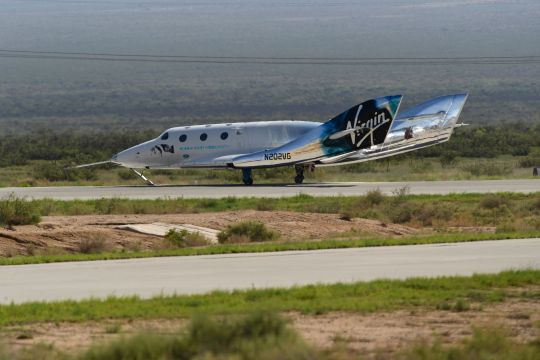
"Virgin Galactic mag weer vliegen na FAA-onderzoek | " is toegevoegd aan onze site. Bezoek voor details. https://watinfo.nl/2021/09/30/virgin-galactic-mag-weer-vliegen-na-faa-onderzoek/
#virgin galactic holdings inc space#virgin galactic#virgin galactic investing#virgin galactic 22#virgin galactic ceo
0 notes
Text
SpaceX reveals plans for a Texas spaceport resort in new job ad
SpaceX reveals plans for a Texas spaceport resort in new job ad
SpaceX has big plans for its Boca Chica, Texas site – where it’s currently building and testing Starship, the company’s next-generation passenger and cargo spacecraft. A new job posting spotted by CNBC’s Micheal Sheetz seeks a “Resort Development Manager” to be based out of Brownsville, the nearest neighboring town to the small Boca Chica area where SpaceXhas built out its existing test and…
View On WordPress
#Aerospace#ceo#commercial spaceflight#Elon Musk#hyperloop#New Mexico#outer space#Space#space tourism#spaceflight#spaceport#spaceport america#SpaceX#Texas#Transportation#Virgin Galactic
0 notes
Photo


Today the sub-orbital rocket New Shepard will be making its first crewed flight with the third flight of the NS4 booster and capsule-3 RSS First Step combination. It will be the first time anyone has flown onboard New Shepard which is compleatly autonomus, the crew are literally just along for the ride, 'spam in the can' as early NASA astronauts used to say.This flight will include a paying passenger, unlike Virgin Galactic's Unity 22 flight. Oliver Daemon (left), aged 18, is a high school graduate who plans to study physics and innovation management at the University of Utrecht, Netherlands.He replaced the winner (who will launch on a later flight) of the charity auction, who paid a reported USD28m for the first commercial astronaut seat, because of scheduling issues. Daemen also partisipated in the auction securing a second place seat. Daemen's father is the CEO of a private equity firm in the Netherlands. He will become the youngest person to fly in space.The first ever paying astronaut was busnessman Dennis Tito in 2001 who paid USD20m for a flight onboard Soyuz TM-32 and a short duration visit to the Expedition 1 crew onboard the ISS, returning in Soyuz TM-31.Wally Funk will fulfil a long held ambition to fly in space. now aged 82, she joined the privately funded First Lady Astronaut Trainees (FLAT) program in 1961 run by the Lovelace Foundation with some support from NASA which later became known as the 'Mercury 13'. Then aged 21 she was one of 12 women who graduated from the scheme which used the same tests as used by NASA to select the first US male astronauts. However, despite hopeful lobbying, this was never a NASA program and at the time NASA required potential candidates to be fast jet test pilots, the catch being that back then the US military did not except women into its flight programs.After learning to fly in 1958 Wally Funk became a civilian flight instructor and has logged 19,600 flying hours, teaching over 3000 people to fly in all forms of avaition, she says 'everything the FAA has, I've got a license for'. Funk became the first female FAA inspector in 1971 and the first female National Transportation Safty Board (NTSB) air safty investigator in 1974.She previously paid USD200,000 on a ticket to fly onboard Virgin Galactic's SpaceShipTwo but the prospect of that flight was delayed with the loss of the first SpaceShipTwo on a development flight. Funk will become the oldest person to fly in space as defined by the internationally recognised 100km (328,000ft) 'Kaman line', beating John Glenn's record who made his second spaceflight onboard STS-95/OV-103 Discovery in 1998 when aged 77.Then of course Amazon and Blue Origin owner Jeff Bezos and his brother Mark will also be on the flight.Two further flights are planed this year and the other booster NS3 will continue to fly uncrewed science payload missions.Launch is scheduled for 14:00BST (08:00CDT) from LC1 Corn Ranch, Van Horn, Culberson County, West Texas. Coverage on Blue Origins You Tube page from 12:30BST. Pic: Blue Origin
2 notes
·
View notes
Photo

The Billionaire ‘Space Race’ Has Nothing to Do With Space
Ever since COVID-19 pandemic lockdowns started easing up, billionaires have been eager to spread their wings. Last month, then-Amazon CEO Jeff Bezos announced he was going to suborbital space in a Blue Origin vehicle two weeks after his last day on the job. Virgin Galactic CEO Richard Branson saw an opening and announced he would beat Bezos by 9 days and take flight on his company's spaceplane on July 11.
On Sunday, Branson, along with two pilots and three other passengers, took off on the VSS Unity and soared up 86 kilometers for a few minutes before returning to Earth. Virgin made a big deal out of this flight, releasing a company promo video with the tagline, "If we can do this, imagine what else we can do," and many celebrated Branson's space travel as being an important step for humanity—except it wasn’t, unless you're an investor.
2 notes
·
View notes
Text
SpaceX's first civilian space mission on September 15 2021
SpaceX has taken this a step further, Known as the first private company to launch manned space missions. As of now, US Space Agency X is carrying astronauts as well as essential cargo to the International Space Station. Now the SpaceX company is starting space tourism.

On September 15, four civilians will embark on a three-day space trip from SpaceX. The name of this campaign will be Inspiration4. American billionaire Jared Isaacman will lead the campaign.
The preparations for the Inspiration 4 campaign are in full swing. The spacecraft, weighing about 12 tons, will be launched into space by a Falcon 9 rocket. Jared Isaacman, 38, and three others will travel in the spacecraft. The spacecraft will orbit the Earth at an altitude of about 590 kilometers above the Earth at an altitude of 17,000 kilometers per hour for 3 days.
The spacecraft is to land in the Atlantic Ocean on September 18 with the help of a parachute. Various medical experiments on human blood pressure will conduct during these three days. This information will used for future manned space missions.
Earlier in July, two private companies in the US space technology sector successfully carried out space travel missions. Virgin Galactic billionaire Richard Branson traveled to space with 3 passengers.
Crew members
Jared Isaacman, Hayley Arceneaux, Sian Proctor and Chris Sembroski this four are crew members of Inspiration4 mission. Jared Isaacman will serve as commander of Inspiration4. He is the CEO & Founder of Shift4 Payments, which is a payment processing company.
#SpaceX's first civilian space mission#Jared Isaacman Hayley Arceneaux Sian Proctor and Chris Sembroski#Inspiration4 mission#spacecraft#Falcon 9 rocket#Falcon 9
1 note
·
View note
Text
Virgin Galactic is weeks away from reaching space, CEO says - Tue, 09 Oct 2018 PST
A few months after another successful test flight over the Mojave Desert, billionaire Richard Branson says his space company, Virgin Galactic, might be out among the stars in a matter of weeks. Virgin Galactic is weeks away from reaching space, CEO says - Tue, 09 Oct 2018 PST
0 notes
Text
5000 BTC Giveaway Scam: Chamath Palihapitiya, Elon Musk Not Giving Away Bitcoin
5000 BTC Giveaway Scam: Chamath Palihapitiya, Elon Musk Not Giving Away Bitcoin
The number of bitcoin giveaway scams has been increasing rapidly amid rising prices of cryptocurrencies and deepening economic crisis worldwide. These scams claim that famous people are giving away bitcoin, such as Virgin Galactic Chairman Chamath Palihapitiya, Tesla CEO Elon Musk, and U.S. presidential candidate Michael Bloomberg.
Bitcoin Giveaway Scams on the Rise
Bitcoin giveaway scams…
View On WordPress
1 note
·
View note
Text
Human Spaceflight In 2020: What Lies Ahead
https://sciencespies.com/news/human-spaceflight-in-2020-what-lies-ahead/
Human Spaceflight In 2020: What Lies Ahead

Last Thursday, NASA confirmed that The Boeing Company had completed readiness reviews for a December 20, 2019 launch of its uncrewed CST-100 Starliner spacecraft to the International Space Station (ISS). This launch will be the first flight of Boeing’s Commercial Crew vehicle, and the second flight overall for NASA’s Commercial Crew Program following SpaceX’s uncrewed Dragon 2 launch in March. Pending a successful uncrewed Orbital Flight Test (OFT), Boeing plans to launch a crewed mission aboard its Starliner spacecraft early next year. Similarly, SpaceX plans to launch crew to the ISS using its Dragon 2 spacecraft in the near future, pending a successful In-Flight Abort Test in January.
For years, the industry has eagerly awaited the first Commercial Crew launches, as the last spacecraft to receive human-rating certification was NASA’s Space Shuttle in 1981. Since then, space agencies and private companies around the globe have poured significant money and resources into developing new crew vehicles, but none of these efforts have yet resulted a crewed mission.
As the year draws toa close, space agencies and companies have begun to turn their sights towards 2020 for crewed flight. Below is a peek at what we can look forward to in the next year.
1. Crewed launches from both NASA Commercial Crew Program providers

NASA introduced to the world on Aug. 3, 2018, the first U.S. astronauts who will fly on … [+] American-made, commercial spacecraft to and from the International Space Station – an endeavor that will return astronaut launches to U.S. soil for the first time since the space shuttle’s retirement in 2011. The agency assigned nine astronauts to crew the first test flight and mission of both Boeing’s CST-100 Starliner and SpaceX’s Crew Dragon. The astronauts are, from left to right: Sunita Williams, Josh Cassada, Eric Boe, Nicole Mann, Christopher Ferguson, Douglas Hurley, Robert Behnken, Michael Hopkins and Victor Glover.
NASA
NASA’s Commercial Crew Program (CCP) has provided funding to U.S.-based private companies to develop orbital human spaceflight capabilities since the first phase of program awards (Commercial Crew Development 1, or CCDev 1) in 2010. The program was created in order to reduce U.S. reliance on Russia for human spaceflight capabilities after the retirement of the Space Shuttle in 2011. Since 2011, NASA has paid Russia approximately $86 million per seat to launch astronauts to the ISS aboard its Soyuz spacecraft.
After supporting 6 companies through the initial development and proposal phases of the program, NASA ultimately selected Boeing and SpaceX for Commercial Crew Transportation Capability (CCtCap) contracts in 2014. The multibillion dollar CCtCap contract provides funding for each provider to complete an uncrewed mission to the ISS, verify its vehicle’s in-flight abort capabilities, and finally complete a crewed demonstration mission during which two NASA astronauts are successfully ferried to and from the ISS aboard the company’s vehicle.
Though the program has experienced the delays common to human spaceflight development, it had a productive year in 2019, with one uncrewed test flight complete and another on the books for this month. While the program has not publicly released specific launch dates for its crewed flights, NASA Administrator Jim Bridenstine has expressed confidence that the providers will launch crew in the first half of 2020.
Boeing’s CST-100 Starliner

Boeing’s first CST-100 Starliner spacecraft sits atop a United Launch Alliance Atlas V rocket on pad … [+] 41 at Cape Canaveral Air Force Station on December 4, 2019 in Cape Canaveral, Florida. The Starliner crew capsule, designed to carry as many as seven astronauts to the International Space Station (ISS), is scheduled to make its first unmanned test flight to the ISS on December 19. (Photo by Paul Hennessy/NurPhoto via Getty Images)
NurPhoto via Getty Images
Boeing’s CST-100 Starliner spacecraft is scheduled to launch its OFT mission to the ISS aboard a United Launch Alliance Atlas V rocket on December 20. According to NASA’s press release, the spacecraft will dock to the ISS on December 21 and will remain attached for approximately a week. On December 28, the spacecraft will undock from the ISS and re-enter the Earth’s atmosphere before performing a parachute and airbag-assisted landing at White Sands Missile Range in New Mexico.
The OFT launch comes on the heels of the Starliner Pad Abort Test, which the company successfully completed at the beginning of November. Boeing previously experienced a setback when during a 2018 attempt at the test, a propellant leak occurred during engine shutdown. Based on the results of the subsequent anomaly investigation, Boeing implemented an operational control to prevent the leakage from re-occurring.
As Boeing has chosen to verify its vehicle’s in-flight abort capabilities via analysis rather than test, the OFT mission is intended to be the vehicle’s final test flight before its first crewed launch early next year. The vehicle’s crewed flight test (CFT) will provide ISS transportation for 3 crew: NASA astronauts Nicole Mann and Edward “Mike” Fincke, as well as Boeing Commercial Crew Director and former NASA astronaut Christopher Ferguson. Pending successful execution of the mission, Ferguson could become the first individual in history to travel to the ISS in both a government and commercial capacity.
SpaceX’s Crewed Dragon 2 Spacecraft

The SpaceX Dragon spacecraft which is designed to carry people and cargo to orbiting destinations … [+] such as space stations, is displayed at the SpaceX headquarters in Los Angeles on July 21, 2019. (Photo by Mark RALSTON / AFP) (Photo credit should read MARK RALSTON/AFP via Getty Images)
AFP via Getty Images
SpaceX’s Dragon 2 vehicle (sometimes referred to as “Crew Dragon”) launched to the ISS for the first time this March, when it successfully completed an uncrewed 5 day mission before splashing down safely in the Atlantic Ocean. Shortly afterwards, the company experienced a setback when the same vehicle used for this mission exploded on a test stand in Cape Canaveral during a capsule static fire. SpaceX has since completed a full investigation of the anomaly, which traced the fault back to a leaky component that has since been replaced on its other capsules. A newly assembled capsule completed a successful static fire earlier this month, and the company remains on track for a January 2020 launch of its In-Flight Abort Test ahead of its crewed Demo-2 mission early next year.
SpaceX’s Demo-2 mission will provide ISS transportation for NASA astronauts Doug Hurley and Bob Behnken, who have undergone training with the company at their Hawthorne, California headquarters for several years. Though the company has been given the option to transport a SpaceX employee or private passenger to the ISS on this test flight in addition to the two NASA astronauts, SpaceX has not publicly announced any plans to do so.
2. Crewed launches of commercial suborbital vehicles
Suborbital human spaceflight has captivated the imagination of the American public since the 1990s, when renewed interest in space tourism from the investment community began opening the door to the development of new ventures. For the low price of “only” $100,000 to $1M USD, companies such as XCOR Aerospace, WorldView and Armadillo Aerospace promised private citizens a taste of the astronaut experience with short “hops” into space. Though the experience would only last several hours and provide only a few minutes of weightlessness, the substantial price reduction from orbital tourism opportunities (which often cost upwards of $20M USD) gave hope to those who dreamt of bringing spaceflight to the masses.
Space is hard, and unfortunately many of the early players in the commercial suborbital market faced technical and financial setbacks that led them to shut their doors. Over time, the field of competitors has been whittled down to Blue Origin and Virgin Galactic, who have emerged as the pack leaders with their New Shepard and SpaceShipTwo vehicles. While both companies have experienced repeated delays in their flight schedules, both continue to launch successful test flights on a regular basis, with company executives publicly stating this year that they expect crewed flight to occur within the next few months. If things continue as planned, 2020 could finally be their year.
Blue Origin’s New Shepard

Participants enjoy the Blue Origin Space Simulator during the Amazon Re:MARS conference on robotics … [+] and artificial intelligence at the Aria Hotel in Las Vegas, Nevada on June 5, 2019. (Photo by Mark RALSTON / AFP) (Photo credit should read MARK RALSTON/AFP via Getty Images)
AFP via Getty Images
Blue Origin’s New Shepard suborbital rocket and capsule have been under development since at least 2006, when the program’s first subscale demonstration vehicle first flew. Since April 2015, the full New Shepard system has visited space regularly, and on its second flight the rocket became the first to land vertically on Earth after visiting space.
Named after Alan Shepard, the first American man to visit space, New Shepard was intended from the start to be a crewed transportation system. However, to date, the vehicle’s flights have carried only cargo beyond the Karman line. As of December 2019, Blue Origin has completed 12 test flights of the vehicle, 9 of which have carried commercial payloads. Recent tests have also carried a dummy named Mannequin Skywalker, which is outfitted with sensors to measure how future commercial passengers could be affected by the flight.
Blue Origin CEO Bob Smith has talked about the first crewed flight of New Shepard happening as early as 2018, but this date has repeatedly been pushed back. Smith has attributed these delays to the company’s desire to be “cautious and thorough,” so as not to jeopardize passenger safety.
As of December 2019, the company has not publicly announced a date for the first crewed flight of the capsule, but founder Jeff Bezos has hinted that he expects it to occur in the near future. The first passengers on New Shepard are likely to be Blue Origin employees, and the company has stated that it will not begin taking deposits for commercial passenger flights until these initial crewed flights have occurred.
Virgin Galactic’s SpaceShipTwo

MOJAVE, CA – FEBRUARY 19, 2016 – Sir Richard Branson, center, poses with the employees for photos … [+] by the new Virgin Galactic SpaceShipTwo at its roll out in the Mojave Desert, about a year and a half after Virgin’s last rocket plane broke into pieces and killed the test pilot. (Photo by Al Seib/Los Angeles Times via Getty Images)
Los Angeles Times via Getty Images
Virgin Galactic’s human spaceflight capabilities have technically been in development since 1996, when the Ansari XPRIZE was created to award $10M USD to a team who could launch a reusable manned spacecraft into space twice in two weeks. Mojave Aerospace Ventures (MAV), a joint venture between Microsoft co-founder Paul Allen and Burt Rutan’s Scaled Composites, ultimately won the prize with its SpaceShipOne reusable spaceplane design and White Knight launcher. Following the award, MAV signed a contract with Virgin Galactic to develop a suborbital spacecraft based on the XPRIZE-winning technology for space tourism. This deal resulted in the formation of The Spaceship Company, a joint venture between Virgin Galactic and Scaled Composites, to manufacture the spacecraft.
Since 2004, the team has been hard at work developing Virgin Galactic’s spaceplane and launcher, dubbed SpaceShipTwo and White Knight 2. A mockup of the design was revealed to the press in January 2008, with a company statement that the vehicle itself was around 60% complete at the time.

UNSPECIFIED – JANUARY 24: Virgin Galactic Flight Simulator in January 24th, 2008 – Test pilot Brian … [+] Binnie in the Virgin Galactic SpaceShipTwo flight simulator, which will take passengers a year to just over 100 km altitude; Virgin Galactic’s first world is the spaceline owning an (Photo by Thierry BOCCON-GIBOD/Gamma-Rapho via Getty Images)
Gamma-Rapho via Getty Images
The vehicle’s development has not been without hiccups. In July 2007, an explosion occurred during a SpaceShipTwo oxidizer test at Mojave Air and Space Port, killing three employees and injuring three others with flying shrapnel. The company suffered an additional setback in October 2014 when a SpaceShipTwo vehicle broke up during a crewed test flight and crashed in the Mojave desert. The vehicle’s co-pilot was killed and the pilot was seriously injured. A subsequent inquiry by the National Transportation Safety Board (NTSB) concluded that the crash was caused by the co-pilot’s premature deployment of the spacecraft air brake device for atmospheric re-entry. The board also cited inadequate design safeguards against human error, poor pilot training and lack of Federal Aviation Administration (FAA) oversight as contributors to the accident.
Since conclusion of the NTSB investigation in 2015, the SpaceShipTwo team has conducted 13 successful crewed test flights using its upgraded VSS Unity spaceship. These tests are in addition to the 54 successful test flights that occurred using the VSS Enterprise ship prior to its 2014 crash. Since the crash, Virgin Galactic has also taken over construction of the spacecraft from Scaled Composites, and has redesigned critical components in house to ensure passenger safety.
To date, more than 600 individuals have put down deposits for crewed tourist flights onboard SpaceShipTwo. The total price tag for a flight is $250,000 USD, and customers are asked to front half the ticket price to reserve their spot in advance. A specific launch date for the vehicle’s first commercial passenger flight has not been announced, but founder Sir Richard Branson said earlier this year that he hoped it would occur “in months not years.” Earlier this year, the company commenced its “Astronaut Readiness Program,” a preparatory course for customers that have reserved seats onboard one of the company’s first passenger flights.
3. Steady launch cadence for Russia’s Soyuz

KYZYLORDA REGION, KAZAKHSTAN – JUNE 6, 2018: A Soyuz-FG rocket booster carrying the Soyuz MS-09 … [+] spacecraft with the ISS Expedition 56/57 prime crew members, European Space Agency (ESA) astronaut Alexander Gerst, Roscosmos cosmonaut Sergey Prokopyev, and NASA astronaut Serena M. Aunon-Chancellor, aboard blasts off to the International Space Station from the Baikonur Cosmodrome. Sergei Savostyanov/TASS (Photo by Sergei SavostyanovTASS via Getty Images)
Sergei Savostyanov/TASS
As NASA’s Commercial Crew providers continue to work towards operational crewed missions, Russia’s Soyuz vehicle will continue to be the sole low-Earth orbit transportation option for all ISS partners, who must purchase each seat from ROSCOSMOS. Launching from Baikonur Cosmodrome in Kazakhstan, the Soyuz program has been transporting astronauts and cosmonauts into orbit since 1968. With a fatality rate of 1 in 63 people sent to orbit, Soyuz is thus far the safest human spaceflight system in history. (In contrast, the Space Shuttle’s fatality rate was approximately 1 in 56.)
As of December 2019, Soyuz Expeditions 62 and 63 are on the books for April and May 2020 launches, respectively. Each mission will ferry a crew of 3 astronauts between the Earth and ISS. While NASA hopes to reduce its dependence on the Russians for ISS transportation in the near future, NASA Administrator Jim Bridenstine stated in October 2019 that the agency was looking into purchasing an additional Soyuz seat for fall 2020 or spring 2021 to protect for additional Commercial Crew delays. Although both Commercial Crew partners are expected to launch crew in early 2020, Bridenstine noted that when it comes to human spaceflight development, “usually things don’t go according to plan.”
4. China’s Shenzhou 12 mission and Tiangong Space Station

BEIJING, Oct. 19, 2016 — Photo taken on Oct. 19, 2016 shows the screen at the Beijing Aerospace … [+] Control Center showing a simulated picture of an automated docking between the Shenzhou-11 manned spacecraft and the orbiting space lab Tiangong-2. The Shenzhou-11 manned spacecraft successfully completed its automated docking with the orbiting Tiangong-2 space lab Wednesday morning, according to Beijing Aerospace Control Center. (Xinhua/Ju Zhenhua via Getty Images)
2016 Xinhua News Agency
As of 2019, China is the only nation with human spaceflight capabilities that is not a member of the ISS program. The Chinese manned spaceflight initiative, called the Shenzhou program, successfully sent its first crew member into orbit in October 2003. Since then, the country has successfully completed 5 other crewed missions using its Shenzhou spacecraft and Long March rocket.
The last of these 5 missions – Shenzhou 11 – was launched in October 2016. After a 4 year hiatus, China plans to send its next crew up in 2020. As China does not participate in the ISS, the country plans to construct its own Tiangong Space Station, which will be constructed, owned, and operated solely by the Chinese government. Tiangong is expected to have an orbital lifetime of at least 10 years and to be able to accommodate 3 to 6 astronauts at a time, making it a project of similar scale to the ISS. The Chinese government has stated that it aims to complete construction of the station by 2022.
Looking beyond 2020, the rest of the decade appears rife with opportunity for both the commercial space industry and for government programs with deeper space ambitions. NASA’s Artemis program aims to send “the first woman and next man” to the Moon by 2024. The program has yet to announce a launch date for its uncrewed Artemis 1 test flight, but earlier this month, NASA Administrator Jim Bridenstine stated that he believed it would be sometime in 2021 based on the current Space Launch System (SLS) development schedule.

A model of the SLS rocket on display during the 35th Space Symposium at The Broadmoor in Colorado … [+] Springs, Colorado on April 9, 2019. – NASA is preparing to use the SLS rocket to send US astronauts to the moon in 2024. The four day symposium is the largest space trade show in the world, attracting leaders focusing on space technology, satellite development, rocket design, and space policy. (Photo by Jason Connolly / AFP) (Photo credit should read JASON CONNOLLY/AFP via Getty Images)
AFP via Getty Images
SpaceX, in turn, looks to continue pushing the boundaries by exploring destinations beyond the ISS. The company’s #dearMoon project, which is scheduled for launch no earlier than 2023, aims to send Japanese billionaire Yusaku Maezawa to orbit the Moon in a SpaceX Starship vehicle along with a crew of several artists. One of the project’s major goals is to inspire the creation of new art to promote peace across the world. Initial tests of the Starship system have commenced in Boca Chica, Texas, using subscale models of the spacecraft.
The successful certification and operation of any of the aforementioned vehicles will be a huge milestone, both for the space industry and for humanity as a whole. If the 2010s were the decade of SpaceX, perhaps the 2020s will be the decade where space tourism finally becomes a reality. With a little luck, it could even be the decade where humans once again venture beyond low-Earth orbit.
#News
1 note
·
View note
Text
SoftBank to wait on Khashoggi murder investigation before deciding on second Vision Fund
SoftBank to wait on Khashoggi murder investigation before deciding on second Vision Fund
SoftBank CEO Masayoshi Son says the company won’t walk away from its existing commitment with the Saudi Arabian royal family — the largest LP in its $100 billion Vision Fund — but the firm will wait on the outcome of an investigation into the death of journalist Jamal Khashoggi before deciding on whether to continue the relationship.
In his first public remarks following the gruesome death of…
View On WordPress
#Asia#ceo#Food#funding#Fundings & Exits#Jamal Khashoggi#journalist#Masayoshi Son#Middle East#Prince#richard branson#Saudi Arabia#Softbank#SoftBank Group#Softbank Mobile#sources#View#Virgin Galactic#Vision Fund
0 notes